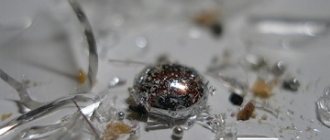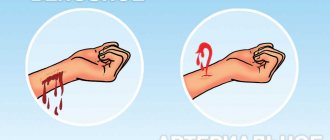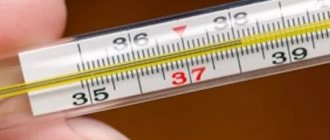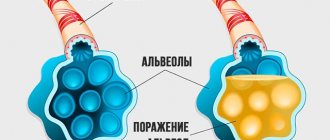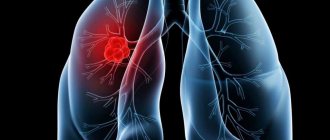Mushroom poisoning
Mushrooms account for approximately 4% of all food poisonings, so everyone needs to know what to do if they have mushroom poisoning. The serious consequences of such intoxication are much more dangerous than the symptoms of other poisonings, which are more common. Thoughtless consumption of mushrooms with food, their improper preparation, purchase or self-collection are the main reasons for the development of intoxication in the body.
How does mushroom poisoning occur?
Biologists have described over 3,000 species of various fungi. Of these, only 400 species are edible; all the rest pose a serious health hazard. Several species are permanently poisonous, and all the rest become poisonous when consumed raw or with improper preparation technology and therefore are called conditionally edible.
The most severe poisonings can be caused by pale, white and spring toadstools. If you accidentally eat just one quarter of their cap, severe poisoning occurs that can lead to the death of an adult. Toadstools are dangerous in any form, since the poison amanitin they contain does not lose its toxicity either when dried or when exposed to high temperatures.
Muscarine, which is contained in fly agarics and whitish talker, is also very dangerous for humans.
In addition to the above, severe poisoning is caused by the following types of fungi:
- stinky mushroom;
- pig;
- false honey mushrooms;
- parterre mushroom;
- satanic mushroom.
Incorrect cooking technology can cause poisoning from mushrooms, morels, strings and milk mushrooms.
How to cook mushrooms to avoid poisoning
To avoid poisoning, it is important to cook mushrooms correctly. To do this, follow these recommendations:
- carefully examine all collected mushrooms;
- clean and rinse thoroughly;
- soak the mushrooms in cold water for 2 hours;
- rinse thoroughly again;
- add water and cook for an hour. Be sure to add the onion;
- place the cooked mushrooms in a colander and rinse well with water again;
- Next, it is recommended to boil the mushrooms and onions again for 15 minutes.
When cooking mushrooms, always add onions to the water. This vegetable changes color, becoming blue, if the mushrooms are poisoned. After double cooking, the mushrooms are ready for further cooking.
Symptoms of mushroom poisoning
The first signs of mushroom poisoning usually appear several hours after eating them. The duration of the latent period depends on the type of poisonous mushrooms, their quantity, age, body weight, alcohol consumption and other reasons. For example, in case of poisoning with toadstool, the incubation period can last up to 6-7 hours, and when eating lepiot or cobweb, it extends to several weeks.
When poisoning with mushrooms, regardless of their type, some general symptoms are observed that are similar to those of other foodborne diseases. These include:
- cramping abdominal pain;
- nausea;
- vomit;
- diarrhea.
In addition, there are signs characteristic of mushroom poisoning.
In case of poisoning with toadstool, diarrhea and vomiting are profuse, they can occur up to 30 times per day. Due to disturbances in the hemostatic system, blood is often present in the stool, and vomit takes on the appearance of coffee grounds. Victims experience convulsions and increased cardiovascular and respiratory failure. The functions of the kidneys and liver suffer, up to the development of renal and liver failure, which is the cause of a coma, and subsequently the death of patients.
In addition to the general symptoms, poisoning with talkers and fly agarics is characterized by the following signs:
- lacrimation;
- increased salivation;
- constriction of the pupils;
- increased sweating;
- bronchospasm accompanied by shortness of breath;
- bradycardia;
- hypotension;
- convulsions;
- delusions and hallucinations;
- coma.
In case of panther fly agaric poisoning: dilated pupils, tachycardia, dry skin and mucous membranes.
Poisoning with morels and strings is characterized by the presence of convulsive syndrome, the development of toxic hepatitis, and damage to the spleen and kidneys. In the blood of patients, the membranes of red blood cells are destroyed (hemolysis), as a result, the urine becomes red.
Symptoms of mushroom poisoning in children are more pronounced, since the children's body is more sensitive to the effects of toxins.
Source: depositphotos.com
Symptoms of poisoning
Poisonous symptoms manifest themselves depending on the effect of fungal toxins on the body. Common symptoms of poisoning include the following:
- Abdominal pain;
- Nausea, always accompanied by severe vomiting;
- A bowel disorder that manifests itself in frequently recurring diarrhea.
Note!
Due to vomiting and diarrhea, the body loses a large amount of fluid. As a result of dehydration, the victim may die before doctors arrive.
Depending on the toxic properties of mushrooms, symptoms are divided into 2 types:
- Gastroenterotropic;
- Hepatonephrotoxic.
Manifestations of the first type of symptoms affect only the gastrointestinal tract. Symptoms develop almost immediately after poisoning (1-3 hours).
Hepatonephrotoxic symptoms do not appear immediately: up to 3 days may pass from the moment of eating mushrooms to the first signs of poisoning.
The development of toxic effects occurs in 3 stages. At the first of them, all the symptoms of a gastrointestinal disorder are present, which completely disappear after a while.
Stage 2 is a time of imaginary well-being, when there are no external manifestations of symptoms of poisoning. But if you do a biochemical blood test at this time, you can detect a rapid increase in liver parameters.
Stage 3 – clinical manifestations of liver damage:
- Yellowness on the skin and mucous membranes;
- Pain syndrome in the area of the right ribs;
- Increased liver size.
At this stage, the functioning of the kidneys is disrupted, which manifests itself in a sharp decrease in urine output: acute organ failure develops.
The process of intoxication involves the nervous system, the work of the heart and blood vessels, which is why the following symptoms develop:
- Excitement followed by lethargy;
- Hallucinations and delusions;
- Tachycardia;
- Decrease in blood pressure;
- Increase in body temperature to 38 degrees;
- The victim's hands and feet become cold;
- Fainting;
- Coma.
Note!
If poisoned people are not provided with qualified assistance in time, a coma will occur, which will lead to death.
First aid for poisoning
The appearance of signs of mushroom poisoning is the basis for immediately providing first aid to the poisoned person.
- Rinse the stomach thoroughly. To do this, the patient should be given at least one liter of water to drink, and then, by pressing on the root of the tongue, induce vomiting. Repeat this procedure several times until the rinsing water is clear. This will help to cleanse the stomach as completely as possible of mushroom toxins that have entered it.
- If mushroom poisoning occurs without diarrhea, then the victim should be given 1 tablespoon of castor or vaseline oil.
- To bind toxic substances that have already entered the small intestine, you must take any sorbent, for example Polysorb MP, Smecta or Activated Carbon.
- Place the patient in bed, wrap him warmly, and apply a heating pad to his feet.
- Provide plenty of fluids. You can give strong black tea, mineral or regular water without gas.
The importance of emergency care
- If you or your loved ones are poisoned by mushrooms and the first symptoms clearly indicate the presence of intoxication in the body, you should immediately call a team of medical professionals. If possible, the victim is taken to a medical facility independently.
- Given the rapidity of poisoning, before doctors arrive, it is necessary to eliminate or reduce the effect of poisons on the body. The essence of first aid for poisoning with poisonous mushrooms is to wash the stomach and intestines. It is also necessary to ensure the restoration of water-alkaline balance in order to prevent dehydration of the body.
- Since the absorption of poisons begins from the gastrointestinal tract, you must immediately cleanse the stomach. For the procedure you will need at least one and a half liters of boiled water. You can use a weak solution of potassium permanganate in the same amount. Drink the prepared water in small sips, and then, if vomiting does not occur spontaneously, press on the root of the tongue with your fingers.
- If the stool is not disturbed, you need to cleanse the intestines with an enema or laxatives. Sorbitol has proven itself well in this matter, the dosage of which depends on the person’s body weight: 1 kg - 2 g of medicine. The resulting dosage is divided into 3 doses and drunk throughout the day.
- Until medical workers arrive, the poisoned person needs to be kept at rest and drink plenty of fluids. You need to drink distilled or mineral water, cold strong tea.
- Be sure to take sorbents. These are drugs that have the ability to bind toxins in the intestines and remove them along with feces. These include activated or white carbon, “Smecta”.
- To prevent disruption of systemic blood flow, warm heating pads are placed on the abdomen and lower extremities.
Further symptomatic therapy will be prescribed by the attending physician, who, after examination and test results, will be able to determine the cause of poisoning.
Note!
If you still have mushrooms that caused poisoning, be sure to give them to doctors for examination.
After eliminating the effects of intoxication, the patient must adhere to a special diet in order to restore the functions of the stomach and intestines. For this purpose, food intake is carried out in small portions, spicy and fried foods are excluded from the diet. During the recovery period, you need to completely stop drinking alcoholic beverages.
When is medical attention required?
In case of any mushroom poisoning, self-medication is unacceptable. If you feel even a slight discomfort after eating mushrooms, you must urgently call an ambulance or take the victim to the hospital on your own.
Treatment of mushroom poisoning is carried out in toxicology departments. It includes:
- gastric lavage through a thick tube;
- prescribing a saline laxative;
- carrying out forced diuresis.
In case of poisoning with talkers and fly agarics, the patient is injected with atropine, which is an antidote to muscarine. The dosage of this drug and the frequency of its administration are determined by the doctor.
If necessary, hemosorption is performed using a carbon column.
In addition, therapy is carried out aimed at eliminating damage to the liver, kidneys, nervous and other systems.
Botulism
Botulism is an acute infectious disease. It is often caused by canned mushrooms. The main causative agent of the disease is spore-bearing bacilli, which are localized mainly in the ground. Accordingly, if the mushroom is poorly rinsed from soil residues, then harmful particles may get into the jar along with it. And the conditions of being in a hermetically sealed space have an even greater impact on their growth and development.
Improperly processed canned mushrooms are a source of botulism infection
If you eat such an infected mushroom, the first signs will begin to appear within 12-72 hours. As a rule, they look like this:
- Nausea and vomiting;
- Headache;
- Loose stools;
- Visual impairment, loss of clarity;
- Dry mouth;
- Difficulty breathing and swallowing;
- Cramps.
Botulism is classified as a serious disease, therefore, at the first clinical signs, it is necessary to urgently consult a doctor who can take the necessary measures and actions.
Possible consequences
The consequences of mushroom poisoning, especially if the patient does not see a doctor in time, can be very serious. Thus, mortality from poisoning with toadstool occurs in 50-90% of cases. Delayed medical care for fly agaric poisoning causes the death of every second poisoned person.
Severe mushroom poisoning can cause chronic liver or kidney failure, which requires transplantation of these organs.
Mushroom poisoning in pregnant women is dangerous, since toxins from inedible mushrooms can penetrate the uteroplacental barrier and cause damage to the fetus and contribute to spontaneous miscarriage or premature birth.
Causes of poisoning
As mentioned above, the cause of poisoning and intoxication of the body is the mistake of the mushroom picker himself. First of all, you need to know that mushrooms are divided into 3 large groups:
- Definitely edible. They can be consumed without pre-processing;
- Conditionally edible. It is prohibited to eat them raw. They require pre-cooking or soaking in water, depending on the subsequent cooking mechanism;
- Inedible. These can be poisonous or non-poisonous mushrooms, but their consumption carries a great risk to both human health and life.
Thus, eating an inedible type of food and not following the rules for preparing conditionally edible mushrooms are precisely the cause of possible poisoning.
The toxins contained in these two groups of fungi, when they enter the human body, begin to quickly spread through the circulatory system. The mucous membrane of the gastrointestinal tract, kidneys and liver are primarily affected. Toxins can also disrupt the functioning of the heart and central nervous system.
Prevention
To prevent mushroom poisoning, it is important to follow the following rules:
- You should collect only those mushrooms that are familiar to you;
- do not eat wormy or overripe mushrooms;
- do not taste raw mushrooms;
- collect mushrooms only in the basket;
- do not collect mushrooms growing along roads, near large industrial enterprises, or in the protected zone of radiation facilities;
- cook mushrooms as quickly as possible after picking; long-term storage is unacceptable;
- when preparing mushrooms, they should first be boiled once and the resulting broth should be drained;
- do not prepare any types of canned mushrooms at home;
- When in the forest, do not leave children unattended.
Video from YouTube on the topic of the article:
How to pick mushrooms to avoid poisoning
When collecting mushrooms, it is recommended to follow the following rules:
- collect only species you know;
- If an old or young mushroom is found in a clearing, it is better not to touch them. These options have blurred external signs;
- avoid gathering places located near the highway or in areas contaminated with radiation;
- During a drought, it is better not to go hunting. Dry weather affects mushrooms, as a result of which their metabolism changes and toxic compounds accumulate.
If you want to enjoy a mushroom dish, it is better to purchase the products in the store. It is not recommended to take such products from the markets, because they have not passed the required control.
Treatment and prognosis for recovery
Treatment of people poisoned by mushrooms consists of 2 stages:
- carrying out a set of detoxification measures (riding the body of poison);
- restorative therapy.
This information is presented in more detail in the table.
| Name of detoxification or recovery procedure | Brief explanations |
| gastric lavage | used to remove mushroom residues |
| gastrointestinal sorption | the patient is prescribed sorbents (enterosorb, entrosgel, activated carbon) to bind toxins and subsequently remove them |
| hemodilution | a kind of “dilution” of blood in order to reduce the concentration of toxic substances |
| forced diuresis | administering large amounts of fluid intravenously while taking diuretics |
| correction of acid-base and (or) water-electrolyte balance | The patient is given intravenous glucose, electrolyte mixtures, etc. |
The kidneys and liver are the organs that are most often and severely damaged by poisoning. Based on this, the therapeutic measures indicated in the table are supplemented by protective hepatic (renal) therapy prescribed based on the results of a study of the patient’s health status.
Full recovery may take several months. But it also happens that persistent dysfunction of the liver and (or) kidneys becomes a lifelong payment for the mushroom delicacy.
Successful recovery depends on the following factors:
- timely initiation of adequate treatment procedures;
- age and general health (pregnant women, children and the elderly are at risk);
- qualitative composition of mushroom poisons (phallotoxins and amatoxins - the most dangerous poisons - are contained in toadstool).
Mushroom poisoning is fraught with long-term treatment and serious complications. The risk of death cannot be excluded. To minimize the risk of poisoning, adhere to the following rules:
- do not cut mushrooms that you are not sure about, do not take old and wormy ones;
- strictly follow the technique for preparing mushrooms;
- When the first signs of poisoning appear, immediately call an ambulance.
This article has been verified by a current qualified physician, Victoria Druzhikina, and can be considered a reliable source of information for site users.
Bibliography
1.https://www.pediatr-russia.ru/sites/default/files/file/kr_ostotr.pdf 2. https://mosgorzdrav.ru/ru-RU/science/default/download/55.html
Rate, How helpful was the article?
5 Voted by 1 person, average rating 5
Did you like the article? Save it to your wall so you don’t lose it!
Complications and consequences
The consequences of mushroom poisoning vary widely: from gastroenteritis and intestinal dysfunction to acute pathologies of the blood, central nervous system, respiratory system, and the development of heart failure.
If first aid is not provided in a timely manner or treatment in a hospital is refused, death from poisoning with pale toadstools occurs in 90% of cases, and with fly agarics in 50% of cases. A dose of 1-2 mushrooms is considered fatal.
Kidney failure caused by intense intoxication can also cause death.
If symptoms of poisoning are quickly detected and a full course of treatment is carried out, severe consequences for the body are usually not observed.
Useful properties of mushrooms
In ancient reference books, very little was mentioned about the dangers of mushrooms. It was only believed that this food was quite difficult for digestion and should not be abused. Their benefits are as follows:
- Mushrooms are 90% water, so they are a low-calorie and dietary product.
- In terms of protein content, they are closer to meat than to plants; they are leaders in protein among products of plant origin, 70% of their dry matter is protein.
- Contains vitamins A, B, C, D, PP.
- They contain insulin and various amino acids, which makes them an indispensable product for diabetes.
- There is a lot of phosphorus, potassium and iron, in small quantities there is iodine, magnesium, selenium, copper, zinc. Healers have long used mushrooms for headaches, frostbite, the treatment of boils, as an antipyretic and sedative.
- The presence of histidine in combination with vitamins, protein and microelements allows them to be used in the fight against cancer. They are able to enhance the effect of chemotherapy and have a powerful immunostimulating effect.
- Helps absorb calcium.
- Alcohol tincture of fly agarics is an excellent rub for joint pain.
The medicinal properties of Chinese shiitake, chaga, chanterelle, porcini, and morel mushrooms are recognized by official medicine. They are used to make medicines.
Mushrooms: edible, inedible and poisonous
The classification is quite arbitrary. There is a very thin line between edible and inedible mushrooms. An inedible mushroom may not be edible due to its taste or smell. For example, gall mushroom is very bitter, and false champignon smells so much of carbolic acid that you definitely won’t eat it. Volushki and some types of rows can be bitter. If the bitterness can be removed from the frills by soaking, then the pointed row will remain inedible. Therefore, there is also a classification according to nutritional value categories.
You need to know poisonous mushrooms by sight. There aren't that many of them. These are mainly lamellar types:
- death cap,
- fly agaric,
- false scent,
- fiber,
- false fox,
- false value.
Of the tubular ones, only one species is known - the satanic one. It is not found in central Russia; it grows mainly in the forests of the Caucasus and Southern Europe. Outwardly, it is similar to white, but differs from it in the pale color of the cap and the reddish leg.
Severe poisoning from poisonous mushrooms
When eating a large amount of poisonous mushrooms, symptoms of intoxication may appear after 30 minutes and last up to 6 hours. The symptoms are acute, and the state of health deteriorates quickly.
Important. After eating mushrooms, you should not drink alcohol. Ethyl alcohol accelerates the penetration of toxins into the blood. Alcoholic beverages should not be consumed until complete recovery.
First aid techniques for severe poisoning are aimed at preventing toxins from entering the blood. If this happens, mortality is inevitable.
Emergency care algorithm.
| Action | Description of the action. |
| Call an ambulance. | |
| Induce vomiting. To do this, you need to drink a large amount of liquid with the addition of soda (1 teaspoon of soda per 200 ml of water). In order for a person to vomit, you need to press two fingers on the root of the tongue. | |
| Rinse the stomach using a tube. | |
| After gastric lavage, give activated charcoal to drink (1-2 tablets for every 10 kg of person’s weight). | |
| If there is no vomiting or diarrhea, then a laxative enema is needed. This is necessary to cleanse the intestines. | |
| For dehydration, Regidron, Litrozol or Oralit are suitable. | |
| If breathing is impaired, Atropine should be administered subcutaneously. |
Further rehydration is carried out within the hospital walls. Pyridoxine hydrochloride, Physostigmine or Atropine sulfate are administered intravenously.
Harm and danger of use
The benefits of mushrooms in civilized society are increasingly being questioned. And not all mushrooms, but those that are collected in the forest. Technological progress has a negative impact on the environment. The quality and properties of plants growing in the open air suffer from this.
Mushroom bodies are capable of absorbing harmful fumes from the air and moisture, and heavy metals from the earth, and after that all their beneficial effects are reduced to zero. Poisoning becomes possible even with absolutely edible individuals.
Prohibited treatment methods
In addition to helping the patient, it is also important not to harm him. Under no circumstances should you:
- Induce vomiting in a patient who faints. You need to put it on a flat surface, turn your head to the side, be sure to check where the tongue is. If it is stuck, try to remove it from the patient’s mouth and leave it slightly protruding. Otherwise, a person may choke on vomit, especially since vomiting can begin suddenly and involuntarily.
- Take painkillers or antipyretic medications. They will not allow you to see a clear picture of the patient’s condition, and as a result, decide on treatment. Although some doctors allow the use of spasmalgon or no-shpa to reduce pain in the stomach and intestines. However, they should be resorted to only in extreme cases.
- Drink alcohol and coffee. They will complicate the patient’s condition, as they promote rapid absorption and distribution of poisons throughout all organs. In addition, they will add stress to the heart, which even without that is forced to work too intensely during intoxication.
- Prevent vomiting and diarrhea, no matter how severe the urge to do these processes. With their help, the body gets rid of poisons.
- Eating any food: in this case there will be no benefit from it. Due to vomiting and diarrhea, no nutrients from food will be absorbed; new products may contain any substances that can aggravate mushroom poisoning; Digesting food will add stress to the stomach.
- Neglect medical help, despite your condition. Even if there is a feeling of relief, the toxic effects of toxins continue. If you refuse qualified medical care, after apparent relief, it will soon become worse than it was at the beginning.
How to choose safe mushrooms
Experienced mushroom pickers know very well how to avoid mushroom poisoning and have developed a number of rules for themselves, by following which you can significantly reduce the risk of choosing and eating poisonous individuals. Among them, the most important and, at the same time, simple are the following.
- Avoid this mushroom if you feel even the slightest doubt about its safety.
- An alarming signal for a person should be seals around the stem of the mushroom. Such formations are characteristic of the most dangerous mushrooms - fly agarics and toadstools. Tuber-shaped thickenings near the base of the stem are especially dangerous. They almost 100% indicate that this is a representative of one of the most dangerous species.
- The mushroom stem must be entirely intact. Otherwise, discard this copy.
- The optimal weather for picking mushrooms is rainy or simply damp. During warm sunny weather and especially during heat, chemical reactions occur in these products, resulting in the formation of toxic substances in the tissues.
Many people believe that insects eating the chosen mushroom are a guarantee of safety. Like, if worms, snails or other animals have chosen this specimen as their food, then it is undoubtedly not poisonous. However, this is not at all true. Insects and other small animals can eat even those mushrooms that would be fatal to humans. Therefore, you cannot focus on wormholes and other traces of the presence of other forest inhabitants on mushrooms.
In any case, you should not pick rotten, moldy, wormy or simply old mushrooms, especially since there is a risk of poisoning even with edible mushrooms.
Mushroom picker mistakes
Many people believe that it is enough to know some signs of distinguishing poisonous mushrooms from edible ones in order to avoid poisoning. All such “signs” are recognized by experts as false and do not reduce the risk of poisoning.
False signs and their revelations:
- Poisonous mushrooms have an unpleasant odor - toadstool, for example, has an aroma similar to that of champignons.
- Insect larvae never live in mushrooms (worms) - a misconception, because mushroom toxins do not affect such organisms.
- Any young mushroom is edible - this is not true, because the toadstool, for example, is deadly to humans at any age.
- If you throw a silver object into a mushroom decoction, then its blackening will indicate the presence of poisonous mushrooms - a misconception, silver will darken even in a decoction of edible mushrooms.
- The head of an onion turns brown in a decoction with poisonous mushrooms - this is not true, it changes color in any mushroom decoction.
- If you throw a mushroom into milk and it quickly turns sour, this means that the mushroom is poisonous - a misconception.
Never trust advice and signs regarding poisonous mushrooms! Such frivolity increases the risk of possible mushroom poisoning to maximum values. Experts recommend collecting only well-known mushrooms; otherwise, it is better to avoid “silent hunting” altogether.
When to seek medical help
Any mushroom poisoning implies refusal of self-medication. Minimal discomfort or incomprehensible symptoms after eating mushrooms are reasons to immediately contact an ambulance. If this is not possible, the patient is taken to the hospital using their own transport.
Poisoned people are treated in toxicology departments, where:
- perform gastric lavage using a thick probe;
- prescribe a solution with a saline laxative;
- forced diuresis is performed.
Depending on the type of mushroom used, for example fly agarics or talkers, the patient is administered atropine, which is an antidote to muscarine. The required dose for administration into the body is prescribed by an experienced specialist.

